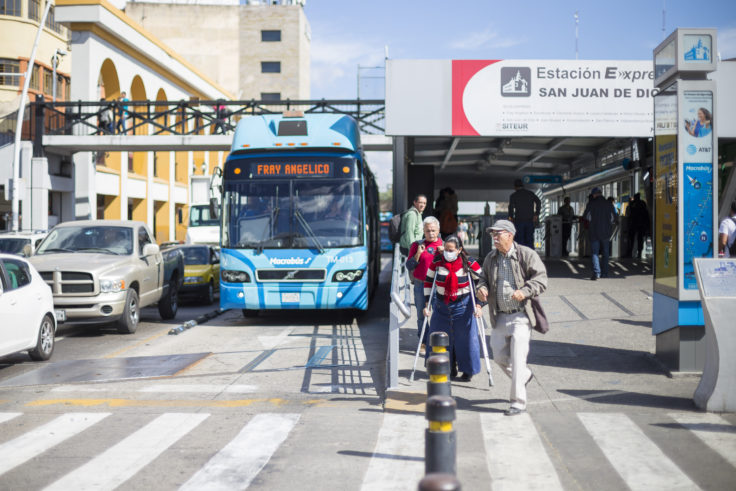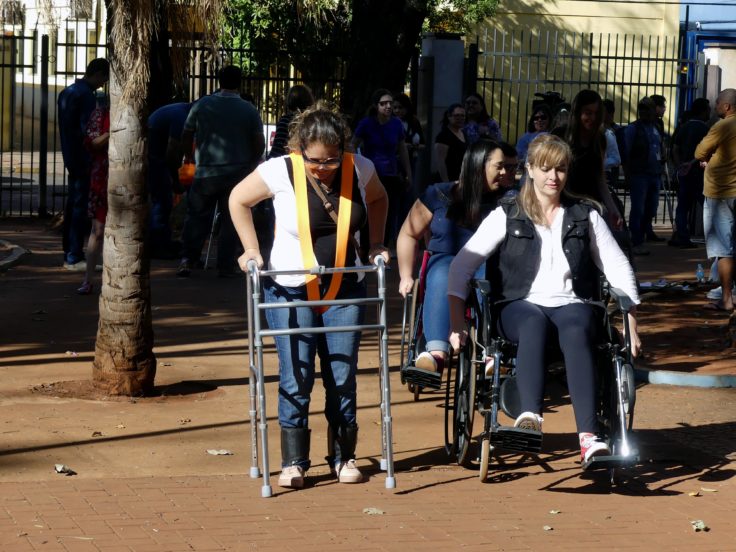June 29, 2022
Ensuring Access for All Persons with Disabilities
A message from UN-Habitat’s Maimunah Mohd Sharif

The COVID-19 pandemic has transformed our world over the past two years. As we are emerging from this global health crisis, we need to find ways of rebuilding our communities and human settlements. It is important to show true solidarity, care for each other and, most of all, take steps to protect those who are at risk, including persons with disabilities and older people.
Building on the UN Secretary-General’s statement on disability inclusion, we need everyone, including persons with disabilities, on board to achieve the Sustainable Development Goals. “Both the Convention on the Rights of Persons with Disabilities (CRPD) and the 2030 Agenda call for placing persons with disabilities at the center of all our efforts, as agents of planning and implementation.” According to UN data, of the one billion people with disabilities around the world, 80 percent live in developing countries. The COVID-19 pandemic has deepened pre-existing social and economic inequalities associated with disabilities and threatens to exacerbate them further.
We also need to revisit the way we plan our cities as it has become clear that following standards and adhering to best practices can make human settlements more resilient. Ensuring inclusivity is at the heart of managing cities. Public spaces designed for sustainable mobility and transportation are a great way to rethink our cities.
The case studies presented in this publication promote inclusion and accessibility to ensure a greater level of livability, so that everyone has equal access to transportation, housing and public spaces. Cities need to unlock the potential of everyone and connect people with opportunities to work, share time with friends and family and live safely and independently.
Maimunah Mohd Sharif, Under-Secretary General & Executive Director
United Nations Human Settlements Programme (UN-Habitat)
In this new paper, Access for All: Persons with Disabilities, ITDP and World Enabled (The Victor Pineda Foundation) explore accessible transit-oriented development and sustainable urban mobility through the lens of people with disabilities and offer a set of recommendations to promote responsive actions. Persons with disabilities make up nearly 15% of the global population, and more than half of all people with disabilities live in towns and cities. Yet our cities rarely address mobility needs across the full spectrum of people’s abilities. Most cities are designed from the perspective of people without disabilities and for the convenience of people in motor vehicles rather than people walking, cycling, or using public transportation.
People with disabilities make up nearly 15% of the global population, and nearly 20% in low- and middle-income countries.

People with disabilities can face a multitude of barriers for a complete trip. These can be barriers from the physical environment that prevent mobility; barriers from the social environment that do not provide comfortable, secure, and equitable social interactions; and barriers from the institutional environment such as a lack of institutions/dedicated experts to improve disability accessibility or a lack of universal design guidelines. Disability-inclusive and sustainable walking, cycling, on-demand carshares, and public transportation (both formal and informal) can be safe mobility options for people with disabilities. However, for this to be true, universal design measures in walking, cycling, and public transportation systems should not only be fully accessible but comfortable to use.
Cities must prioritize universal design measures that are not only accessible but convenient, comfortable, and independent. Inclusive transit-oriented development (TOD) — by providing a mix of goods, services, people, and opportunities within short enough distances to complete daily trips by walking, cycling, or transit — is an important approach for improving accessibility of cities for people with disabilities and those with limited mobility. Alongside TOD, universally accessible walking, cycling, and public transportation facilities improve the access and inclusion of persons with disabilities in urban areas.
By reducing the financial and psychological burden of car-oriented travel as well as the distance between key daily destinations and housing, accessible TOD and urban mobility systems enable more independent mobility. In addition, TOD facilitates better access to goods, services, and social and economic opportunities, as well as an increased sense of security and a higher quality of life for people with disabilities and their families. This Access For All paper explores accessible TOD and sustainable urban mobility (walking, cycling, and public transport) through the lens of people with disabilities in cities, including structural and personal barriers, best-practice case studies, and recommendations.

Cities must prioritize transit-oriented development and universal design measures that are not only accessible but also convenient, comfortable, and independent.
The inclusion of universal design criteria in designing spaces allows everyone to enjoy them on equal terms. Creating cities with public spaces that are beneficial for all users and enable healthy, safe, and joyful interactions is essential. Most people will experience some form of disability in their lifetime. Disability may be temporary or permanent and can include difficulties seeing, hearing, walking, climbing, remembering, concentrating, completing self-care, communicating, or being understood.
People with disabilities are a diverse group with a wide variety of experiences who face a multitude of barriers to equitable participation and inclusion in societies around the world. While disability was previously understood using a primarily medical model in which an impairment is the disability, the concept of disability is now increasingly viewed through a social model instead. Through this lens, the concept does not center on individual functionality but rather on disability as being an interaction of health, functioning, environmental, and personal factors.

In addition, we know that women, people of lower socioeconomic levels, and people living in low- and middle- income countries are more likely to be or become persons with disabilities within their lifetime. As populations age, both older people and those with disabilities will increasingly represent a larger percentage of the total population. Creating public spaces and complete streets that have wide, unobstructed, and designated spaces for walking, cycling, and public transit are not only better for people with disabilities, but they are also safer and more comfortable for everyone.
When cities provide access for all persons, including those with disabilities, they are better cities for us all to live. To ensure our built environments are truly inclusive, it is critical that planners, policymakers, and public officials take actions that center the needs and perspectives of people with disabilities and limited mobility.
Read the “Access for All: Persons with Disabilities” Report and Executive Summary >>
View the “Access for All: Designing Inclusive Mobility for People with Disabilities” Webinar >>
Read the “Access for All: Access and Babies, Toddlers, and Their Caregivers” Report >>
